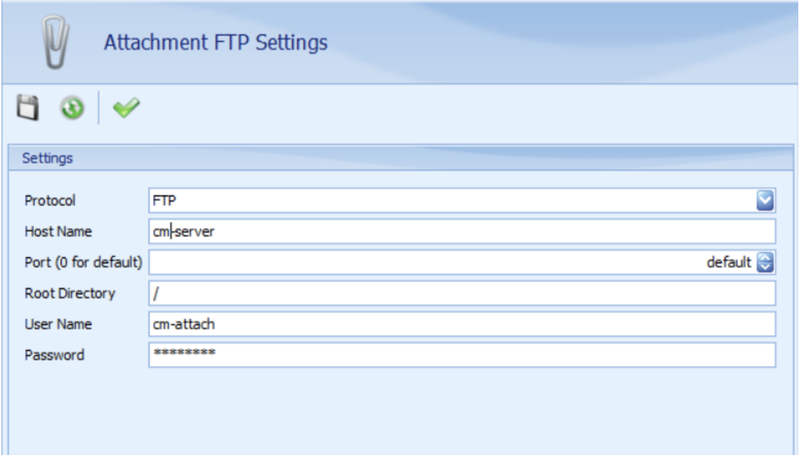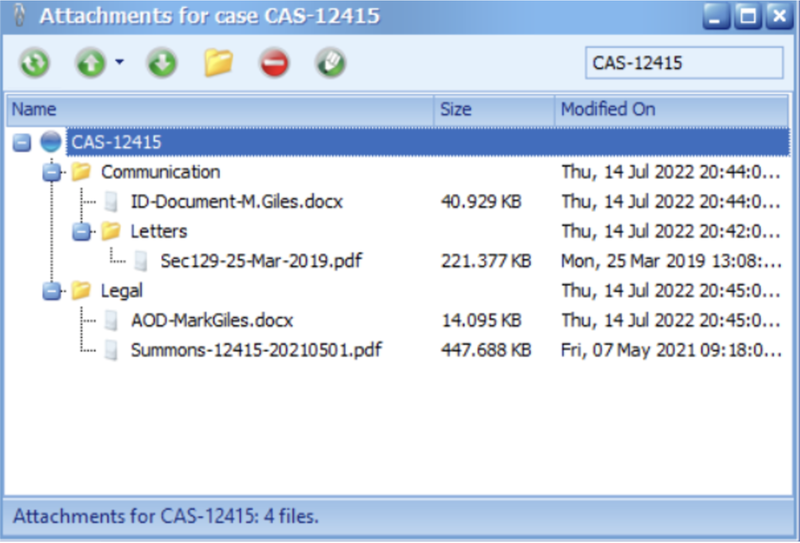
With the early release of Case Manager 5.2 we’ve focussed on making our application stack available in the cloud to organizations that do not wish to host the application on a local network. A client-server infrastructure is still maintained in the environment, predominantly based on database interaction. There were however a couple of features that required file access to the server. As the application is built for a Microsoft Windows environment, this had an impact on licensing for the use of the operating system.
We’re proud to announce the release of a Case Manager extension that allows FTP access to the case attachments. FTP (File Transfer Protocol) is a standard protocol to transfer files over TCP/IP, a common communication protocol of local networks and the Internet. In older versions of the Case Manager application files attached to a case were accessed by an agent by means of a shared windows file location. This functionality was moved to a separate extension, “Attachment File Share”, in version 5.2.1 which can now be replaced by the new “Attachment FTP” extension to access the attached files via the FTP protocol. Since a client-access license is not required for FTP access to the server, it can save Case Manager clients costs on operating system licensing.
A Case Manager extension is a single DLL file that extends the functionality in the system. The Attachment FTP Extension file is:
casemanager.extension.attachmentftp.merged.dll
Often the extension is distributed with a new Case Manager deployment in the CaseManagerExtensions folder. Should the extension not be available in this folder, it can be downloaded from casemanager.tech . Note that the extension requires at least version 5.2.1 of Case Manager.
After installing the extension it is recommended to set the FTP settings in the Extension Settings section in the Configuration Tool.
When moving from the Attachment File-Share Extension (functionality the same as pre-5.2.1 versions of Case Manager) to the Attachment FTP Extension, remove the Attachment File-Share Extension from Case Manager in the Extension Manager (Configuration Tools). If the CaseManagerAttachments folder is exposed as an FTP site, a seamless transition will be possible: with the correct settings, no files will have to be moved to the new extension.
In Case Manager, the attachment button (from the previous extension) will be replaced by the new attachment button. If you make use of toolbar customizations, I suggest revisiting this customization after installation.
Attachment FTP extends Case Manager with two features: a case action button which gives an agent access to the case’s attachments, and extension-specific settings to set the necessary FTP connection details.

The Attachment FTP settings can be accessed in the Configuration Tool in the Extension Settings section. In addition to the basic settings required for agent workstations to connect to the correct FTP location, a test action is available to verify whether the entered settings are correct.

The extension adds a toolbar button to Case Manager which will open the attachments to the case, accessed via FTP. A tree view of all the attached files will be shown to the user, along with the file size and last modified date. Basic file operations can be performed on the files - accessed by the toolbar buttons or context (right-click) menu.
Files and folders can be moved to different positions in the attachment file hierarchy by dragging them to the desired location. To upload, files can also be dragged into the attachments, or pasted, from Windows explorer/desktop.